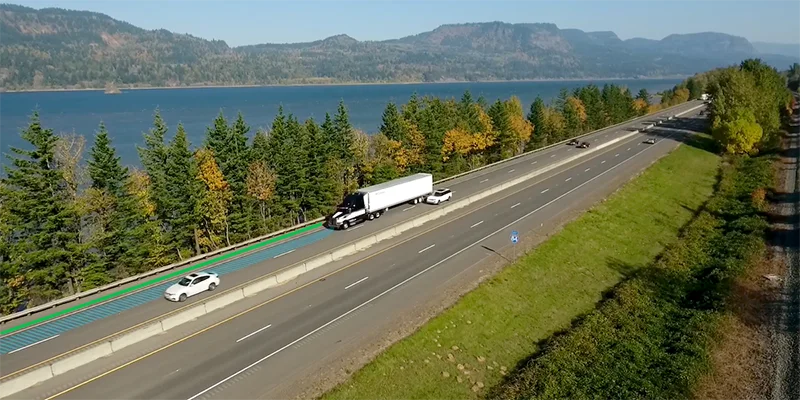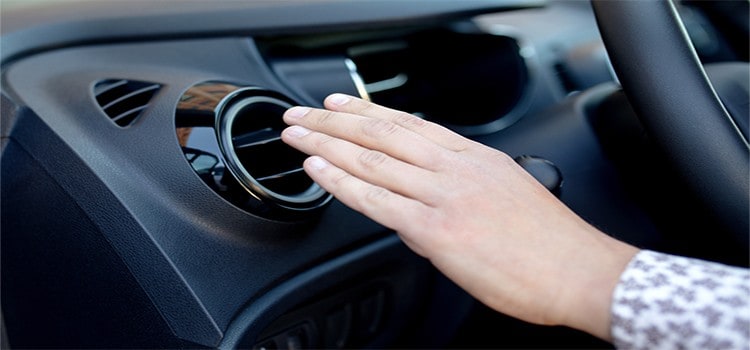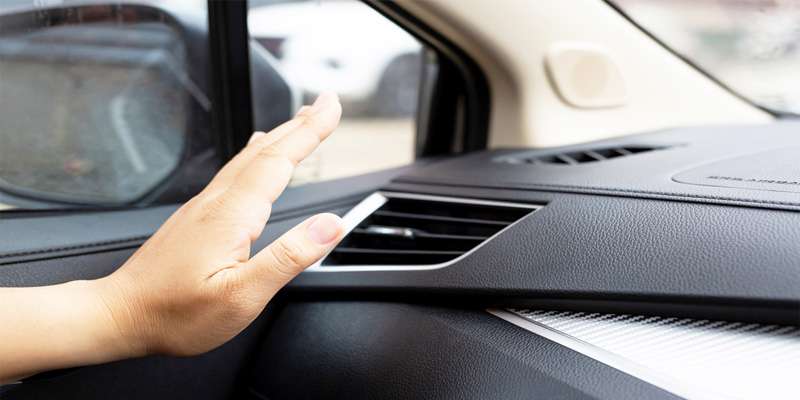Subaru Forester parts from model years 1998 to 2002 are largely interchangeable. Models from 2003 to 2008 also share a significant number of compatible parts.
Owners of Subaru Foresters find a measure of reassurance knowing that parts for their vehicles can be swapped with ease across certain model years. Identifying which parts fit across different versions of this versatile SUV can save both time and money, making maintenance or upgrades more straightforward.
The Subaru Forester has undergone several generational changes since its introduction, yet each generation retains a level of parts commonality. For drivers dedicated to keeping their vehicle in top condition, this interchangeability is also crucial for custom modifications or repairs after market discontinuations. Navigating through the specifics of which components are compatible requires attention to the year and version of the vehicle, but it undoubtedly simplifies the process for many Subaru enthusiasts and mechanics alike.

Credit: subaruforesterny.com
Interchangeable Parts In Subaru Forester Models
Subaru Forester enthusiasts know that understanding which parts are interchangeable between different years of the model can save time and money. It allows for an easier and often less expensive repair process. Let’s dive into the details and see which parts can be swapped between Forester models.
The Basics Of Part Interchangeability
Interchangeability among Forester parts depends on the generation of the vehicle. Subaru Foresters are typically grouped into five generations:
- First Generation (1997-2002)
- Second Generation (2003-2008)
- Third Generation (2009-2013)
- Fourth Generation (2014-2018)
- Fifth Generation (2019-present)
Parts from vehicles within the same generation are more likely to be interchangeable.
Specific parts like wheels, some suspension components, and certain interior elements often have a higher interchangeability rate. It’s essential to research and confirm each part’s compatibility.
For accurate information on part interchangeability, check with online forums, Subaru parts specialists, or an in-depth database.
Benefits Of Using Interchangeable Parts
Why seek interchangeable parts for your Subaru Forester? Key benefits include:
- Cost Efficiency: Using interchangeable parts can be less expensive than buying new.
- Availability: It’s often easier to find parts from a common pool of vehicles.
- Environmentally Friendly: Reusing parts helps reduce waste and pollution.
Remember, using OEM (Original Equipment Manufacturer) interchangeable parts ensures higher compatibility and reliability for your vehicle. This could extend the life of your Forester.
Subaru Forester: A Brief History
The Subaru Forester stands tall as an iconic compact SUV. Since its debut in 1997, the Forester has built a reputation. Durability, reliability, and all-wheel drive prowess define this model. Its growth mirrors Subaru’s dedication to innovation and quality. Owners often highlight the Forester’s ability to traverse various terrains and its family-friendly features as reasons for their loyalty.
Evolution Of Forester Models
The Forester has evolved significantly over the years, adapting to customer needs and technological advances. See its progress from a rugged utility vehicle to a refined crossover SUV.
- First Generation (1997-2002): Sprung from the Impreza, unique in style.
- Second Generation (2003-2008): Grew in size, added comfort.
- Third Generation (2009-2013): Sleeker design, more features.
- Fourth Generation (2014-2018): A shift to modernity, safety technology.
- Fifth Generation (2019-Present): Connectivity, efficiency at its best.
Generational Changes Affecting Part Compatibility
As models change, so do their parts. Knowing the Forester’s generational shifts is key to understanding part interchangeability. Here’s a simplified view:
| Generation | Years | Part Compatibility |
|---|---|---|
| First | 1997-2002 | Parts largely interchangeable within these years |
| Second | 2003-2008 | Some crossover with the first, mostly internal |
| Third | 2009-2013 | Select parts with the second, major changes in structure |
| Fourth | 2014-2018 | Electronic components vary, body parts rarely fit earlier models |
| Fifth | 2019-Present | Mostly unique to this generation, few cross-generational parts |
Recognize your Forester’s year and generation. This ensures you find the right part with confidence.
Identifying Interchangeable Parts
Identifying interchangeable parts for your Subaru Forester can save time and money. It allows for easier repairs and upgrades. Certain Subaru Forester models share compatible parts. This compatibility ensures access to a wider range of replacement options. Knowing which parts can swap between years is essential for Subaru owners and mechanics alike.
Decoding Subaru Parts Numbers
Subaru parts numbers reveal a lot about interchangeability. Each number contains a code. This system identifies the part and its potential compatibility with other models. A Subaru part often starts with a sequence such as ‘12345AB001’. Here, ‘12345’ may relate to the part category. ‘AB’ could indicate the design version. Finally, ‘001’ often signifies minor design changes or updates.
Understanding this coding system is crucial. Parts with similar codes can be interchangeable. Differences in the last few digits may indicate minor updates. These updates still allow compatibility with certain model years.
Resources For Cross-referencing Parts
Various resources are available for cross-referencing parts. Cross-referencing helps verify part compatibility across Subaru Forester models. Subaru forums and parts databases offer valuable information. Enthusiasts discuss their experiences with part swaps. They also share insights into what works and what doesn’t.
- Online parts catalogs list parts and their applicable model years.
- Part number lookup tools are available on many automotive parts websites.
- Dealer parts departments can provide official compatibility information.
These resources combine to create a comprehensive guide. This guide simplifies the process of identifying which parts fit your specific Subaru Forester year. Always double-check part numbers and verify with multiple sources to ensure the best fit and function for your vehicle.

Credit: www.amazon.com
Common Interchangeable Parts Across Forester Years
Subaru Forester owners often find the need for replacements and upgrades. Understanding which parts from different Forester years are interchangeable saves time and money. Below, discover which components work across various models.
Mechanical Components With High Compatibility
Several mechanical parts in Subaru Foresters serve multiple models without issue. These parts make maintenance much simpler. Key areas of compatibility include:
- Engines: Certain engine models fit a range of Forester years, especially those built on the same platform.
- Transmissions: Many Forester owners swap transmissions between similar generation models with ease.
- Suspension parts: Suspension components are often interchangeable, allowing for a smoother ride and better handling.
- Brakes: Brake components such as pads, discs, and calipers often fit across different years with the same setup.
Interior And Exterior Elements That Fit Multiple Years
The interior and exterior parts can also be switched between various Forester years. Features that fit perfectly include:
| Part Type | Compatible Years |
|---|---|
| Seats | Forester models from similar generations often have seats that are a direct swap. |
| Wheels | Wheels with same bolt patterns fit, giving a fresh look and reliable performance. |
| Doors and Trim | Doors, trims, and other body parts frequently work between different year models. |
| Lights | Taillights and headlights from certain years can be used to replace or upgrade existing ones. |
Remember to check specifications thoroughly before swapping any part. Compatibility can vary based on the region and specific model variants.
Factors Affecting Part Interchangeability
When you love your Subaru Forester, you want to keep it running smoothly. Finding the right parts can be tricky. Knowing what year parts are interchangeable is key.
The Impact Of Mid-cycle Refreshes
Subaru Forester models can have changes midway through their production years. These changes are known as mid-cycle refreshes. They can affect which parts will fit your Forester.
For instance, a 2009 Forester might share engine parts with a 2012 model. But, if a mid-cycle refresh happened in 2011, the tail lights could differ. Always check the production year when you swap parts.
Regional Variations In Subaru Forester Parts
Subaru sells Foresters around the world. Due to this, parts can vary by region. A Forester from Japan might have a different engine tune than one from the US. Use your vehicle identification number (VIN) to find the right parts.
| Region | Engine | Headlights |
|---|---|---|
| US | EJ25 | HID |
| Japan | FA20 | LED |
- Check region-specific part numbers
- Consult forums for part compatibility
Remember, part interchangeability can save you money and time. Yet, it’s essential to do the research to avoid mistakes. Use these insights to guide your Forester part replacements.
Maximizing Your Forester’s Potential
Maximizing Your Forester’s Potential involves strategic enhancements to your vehicle’s performance and functionality. Subaru Forester owners often explore which parts from different years are interchangeable. This can be a savvy way to upgrade and maintain your SUV. Understanding which components can swap out allows for improvements and repairs that don’t break the bank.
Pros And Cons Of Part Swapping
Swapping parts between different model years of Subaru Foresters presents various pros and cons.
Pros:- Cost-effective repairs and upgrades
- Broader availability of used parts
- Personalization of your vehicle
- Environmentally friendly by reusing parts
- Potential mismatch issues and reduced reliability
- Compatibility troubles that may necessitate modifications
- Warranty concerns if not using OEM parts
- Varying quality of used parts
Enhancing Performance With Interchangeable Components
Interchangeable components can dramatically improve your Forester’s performance.
| Component | Performance Enhancement |
|---|---|
| Suspension parts | Better handling and ride comfort |
| Brakes from newer models | Improved safety and stopping power |
| Engine components | Increased horsepower and efficiency |
Identify components applicable to your Forester. Always verify the compatibility. Embrace your vehicle’s potential!

Credit: www.reddit.com
Frequently Asked Questions On What Year Subaru Forester Parts Are Interchangeable
What Year Did The Forester Change?
The Subaru Forester underwent major model changes in 1998, 2003, 2009, 2014, and 2019. Each of these years marks the introduction of a new Forester generation.
Do All Foresters Have The Same Engine?
No, Foresters come with different engine options depending on the model and year. Variants include turbocharged and naturally aspirated engines.
What Year Is 2nd Gen Forester?
The 2nd Gen Subaru Forester was produced from 2003 to 2008.
Does Subaru Use Toyota Parts?
Some Subaru vehicles share parts with Toyota models, due to their past collaborations and shared R&D efforts.
Conclusion
Understanding Subaru Forester part interchangeability enhances maintenance and upgrades. Years 1997 to 2021 offer cross-compatibility options, boosting flexibility and cost-effectiveness for owners. Optimize your Forester’s functionality and longevity by tapping into this valuable resource. Remember to verify specifics for a seamless fit.
Keep exploring, keep maintaining, and drive confidently.











